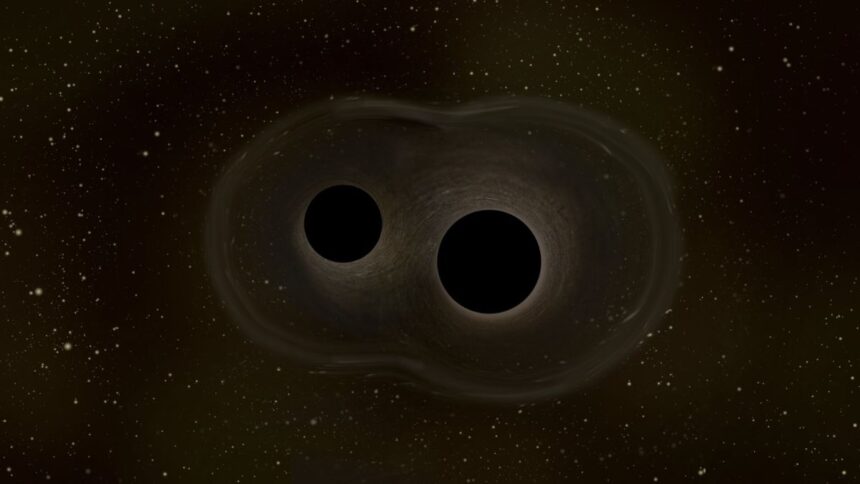The black hole merger is one of the most powerful events that occurs in the universe. The black hole merger is one of the most fascinating things that shapes our universe. What happens when black holes merge, and why are these so important to study?
Black holes are objects in space which has intense gravity, not even light, that can escape. Black holes form during the life-cycle of stars, when the star is at its last stage, and then these massive stars collapse under their own gravity and leave behind a dense core known as a black hole. According to their masses, there are three types of black holes: mass black holes, super black holes, and intermediate-mass black holes.
How do black hole pairs form?
Two possible ways show how black hole pairs form. First, they may originate as binary star systems, and after that, during their life cycle, those two stars evolve into black holes simultaneously. Second, they could be formed independently, and later, they catch each other in their orbit in vast space.
Initially, when two black holes formed independently, they orbit each other in wide, slow circles. This phase last for millions of years. As time passes, these black holes lose their energy. It is one of the important factors for their ultimate collision. Collision does not occur at one single time. It happens through many mechanisms that play over a long period.
As the black holes come close together, they move in space-time by themselves. After that, they release gravitational waves, and those waves ripple in the fabric of space-time. These waves propagate outward from the binary system, carrying away energy and angular momentum. When these black holes come extremely close together, gravitational waves drain energy from the black holes.
Scientists face a perplexing issue known as the “final parsec problem.” Gravitational interactions can bring black holes within roughly a parsec (about 3.26 light-years) of each other. But beyond this point, there isn’t enough matter to continue extracting orbital energy, and the gravitational waves remain too weak to bridge the gap reasonably. This problem leaves a gap in our understanding of how black holes ultimately close the distance and merge.
Despite the final parsec problem, black holes do manage to merge. Some theories suggest that disturbances caused by nearby stars, gas clouds, or other black holes can provide extra push. Alternatively, dense stellar environments like globular clusters might help by scattering stars in ways that help the black holes lose additional energy.
The two black holes near each other start to deform due to their intense gravitational fields. Although black holes lack a physical surface, their event horizons—the boundaries beyond which nothing can escape stretch and elongate towards each other as they spiral inward.
The event horizons of each black hole play a crucial role in the merging process. They act like invisible boundaries that warp and change shape as the black holes draw closer. This warping results from the highly curved space-time in the region around each black hole, which distorts the shape of the event horizons.




